ATTRACTIONS
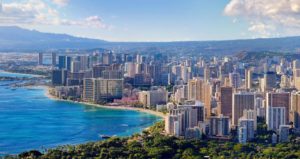
Honolulu Honolulu, on the island of Oahu’s south shore, is the capital and largest city of the U.S. state of Hawaii. The city is the main gateway to Hawaii and a major portal into the United States. It is also a major hub for international business, military defense, as well as famously being host to a diverse variety of east-west and Pacific culture, cuisine, and traditions. Honolulu is the most remote city of its size in the world and is the westernmost and southernmost major U.S. city. Honolulu means “sheltered harbor” or “calm port”. The city has been the capital of the Hawaiian Islands since 1845 and gained historical recognition following the attack on Pearl Harbor by Japan near the city on December 7, 1941. As of 2015, Honolulu was ranked high on world livability rankings, and was also ranked as the 2nd safest city in the U.S. Honolulu also contains small pockets of rainforest, canyons, waterfalls and beaches with coral reefs. It is the location of Punchbowl – a crater-turned-cemetery, the National Memorial Cemetery of the Pacific.
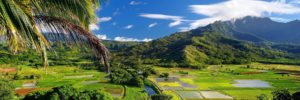 Kauai Kauai is an island in the Central Pacific, part of the Hawaiian archipelago. It’s nicknamed “the Garden Isle” for its tropical rainforest covering much of its surface. The dramatic cliffs and pinnacles of its Na Pali Coast have served as a backdrop for major Hollywood films, while 10-mile-long Waimea Canyon and the Nounou Trails traversing the Sleeping Giant mountain ridge are major hiking destinations.
Kauai Kauai is an island in the Central Pacific, part of the Hawaiian archipelago. It’s nicknamed “the Garden Isle” for its tropical rainforest covering much of its surface. The dramatic cliffs and pinnacles of its Na Pali Coast have served as a backdrop for major Hollywood films, while 10-mile-long Waimea Canyon and the Nounou Trails traversing the Sleeping Giant mountain ridge are major hiking destinations.
Popular beaches include Poipu and half-moon Hanalei Bay as well as Ke’e, whose offshore reefs offer snorkeling and scuba diving. Humpback whale-watching is a wintertime draw, while the National Tropical Botanical Garden showcases diverse native plants. Upscale resorts offer fine dining, spas and golf. Zip-lining and helicopter tours are adventuresome options. Nature lovers, beach bums, hikers, bird watchers, and travelers who want to escape tourist crowds without getting too far from civilization.
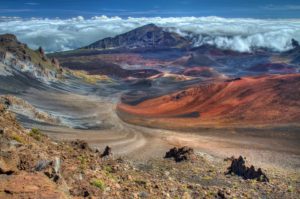 Haleakala National Park Haleakala National Park is an American national park located on the island of Maui in the state of Hawaii. This area is considered sacred to native Hawaiians and there are many important cultural sites within the national park. This enchanted place echoes with stories of ancient and modern Hawaiian culture and protects the bond between the land and its people. The word Haleakala actually means “house of the sun.” According to a local legend, the demigod Maui caught the sun at the summit of Haleakala and forced it to slow its journey across the sky in order to lengthen the day. The park features the dormant Haleakala (East Maui) Volcano, which last erupted sometime between 1480 and 1600 AD. The park is divided into two distinct sections: the summit area and the coastal Kipahulu area. The park is known for its unique volcanic features, its long scenic drive with numerous overlooks, and the unusually clear views of the night sky available. The main feature of this part of the park is undoubtedly the famous Haleakala Crater. The interior of the crater is dotted by numerous volcanic features, including large cinder cones. Two main trails lead into the crater from the summit area: the Halemau’u and Sliding Sands trails. People came from all over the world to hike to Haleakala’s summit. Each morning, visitors come to the summit of the volcano to watch the spectacular sunrise. More visitors come each afternoon to watch the equally amazing sunset. The second section of the park is the Kipahulu. Visitors cannot drive directly to this section from the summit area; they must take a winding coastal road that travels around the windward coast of the island. This part of the park lies within the lower part of Kipahulu Valley. It is separated from the summit area of the park by the upper portion of the valley. This area is designated the Kipahulu Valley Biological Reserve and is closed to the public to preserve the native plant and animal species in this fragile rainforest. This section of the park features more than two dozen pools along Palikea Stream in the gulch called ‘Ohe’o. These pools contain rare native freshwater fish. Visitors may choose to swim in these pools, or they may choose to hike a trail that takes visitors up to the base of Waimoku Falls. More than 90% of the native plants and animals found in Haleakala National Park cannot be found anywhere else in the world. Tourist interest in the area was the primary force responsible for the area becoming a National Park in 1916 and an International Biosphere Reserve in 1980.
Haleakala National Park Haleakala National Park is an American national park located on the island of Maui in the state of Hawaii. This area is considered sacred to native Hawaiians and there are many important cultural sites within the national park. This enchanted place echoes with stories of ancient and modern Hawaiian culture and protects the bond between the land and its people. The word Haleakala actually means “house of the sun.” According to a local legend, the demigod Maui caught the sun at the summit of Haleakala and forced it to slow its journey across the sky in order to lengthen the day. The park features the dormant Haleakala (East Maui) Volcano, which last erupted sometime between 1480 and 1600 AD. The park is divided into two distinct sections: the summit area and the coastal Kipahulu area. The park is known for its unique volcanic features, its long scenic drive with numerous overlooks, and the unusually clear views of the night sky available. The main feature of this part of the park is undoubtedly the famous Haleakala Crater. The interior of the crater is dotted by numerous volcanic features, including large cinder cones. Two main trails lead into the crater from the summit area: the Halemau’u and Sliding Sands trails. People came from all over the world to hike to Haleakala’s summit. Each morning, visitors come to the summit of the volcano to watch the spectacular sunrise. More visitors come each afternoon to watch the equally amazing sunset. The second section of the park is the Kipahulu. Visitors cannot drive directly to this section from the summit area; they must take a winding coastal road that travels around the windward coast of the island. This part of the park lies within the lower part of Kipahulu Valley. It is separated from the summit area of the park by the upper portion of the valley. This area is designated the Kipahulu Valley Biological Reserve and is closed to the public to preserve the native plant and animal species in this fragile rainforest. This section of the park features more than two dozen pools along Palikea Stream in the gulch called ‘Ohe’o. These pools contain rare native freshwater fish. Visitors may choose to swim in these pools, or they may choose to hike a trail that takes visitors up to the base of Waimoku Falls. More than 90% of the native plants and animals found in Haleakala National Park cannot be found anywhere else in the world. Tourist interest in the area was the primary force responsible for the area becoming a National Park in 1916 and an International Biosphere Reserve in 1980.
TRAVEL ADVENTURE
Tourism is an important part of the Hawaiian economy. Due to the mild year-round weather, tourist travel is popular throughout the year. The Hawaiian islands bring out the adventurer in everyone.
The Big Is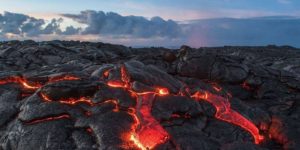 land is known for its volcanoes both active and historic, and the Hawaii Volcanoes National Park has many choices for those who want to experience a walk on previously red hot surface. One of the best easy trails in the park is the Thurston Lava Tube, which takes you on an adventure through the forest into a tunnel that once carried lava. The tunnel itself has a full walkway shrouded in darkness, gives quite a shiver and goosebumps everywhere. The Koko Crater Trail allows you to climb to the top of it and get great views of Oahu and other Hawaiian Islands on a clear day. The trail is steep and difficult but it’s all worth it, and this is the perfect hike if you want to feel like the king of the world. You’ll find the path to the Twin Falls hike just past mile marker 2 on the Hana Highway, which is full of Hawaii’s beautiful native plants and trees all the way to the overlooking waterfall. The trek itself tends to be pretty easy. The twin waterfalls themselves provide a calm and cold water, perfect for anyone wanting for a swim.
land is known for its volcanoes both active and historic, and the Hawaii Volcanoes National Park has many choices for those who want to experience a walk on previously red hot surface. One of the best easy trails in the park is the Thurston Lava Tube, which takes you on an adventure through the forest into a tunnel that once carried lava. The tunnel itself has a full walkway shrouded in darkness, gives quite a shiver and goosebumps everywhere. The Koko Crater Trail allows you to climb to the top of it and get great views of Oahu and other Hawaiian Islands on a clear day. The trail is steep and difficult but it’s all worth it, and this is the perfect hike if you want to feel like the king of the world. You’ll find the path to the Twin Falls hike just past mile marker 2 on the Hana Highway, which is full of Hawaii’s beautiful native plants and trees all the way to the overlooking waterfall. The trek itself tends to be pretty easy. The twin waterfalls themselves provide a calm and cold water, perfect for anyone wanting for a swim.
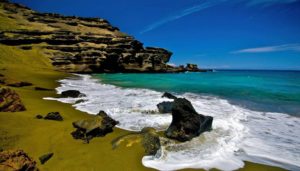 You should check out Haleiwa Beach Park in the charming town of Haleiwa. Sunsets here are in perfect view, the water is on the cooler side, and the beach is wide enough to carve out your own space. It’s time for that long walk on the beach you’ve always wanted. Whether you want to snorkel, kayak, surf, or just go for a swim, Makaha allows you great conditions to do it all. The beach is spacious, the usually sunny conditions of Oahu’s west side make the water temperature great. Incredibly lively sea life like dolphins, sea turtles, and Hawaii’s many colorful fish also make an appearance. Walk on green sand at Papakolea in Kau. One of four beaches in the world to actually have green sand, Papakolea is located near the southernmost point of the island and requires a three mile hike which is filled with scenery. The beach itself is isolated, the sand tends to be on the warmer side, and the waves crash softly because of the rocks there. You’ll truly feel like you’re at the end of the world.
You should check out Haleiwa Beach Park in the charming town of Haleiwa. Sunsets here are in perfect view, the water is on the cooler side, and the beach is wide enough to carve out your own space. It’s time for that long walk on the beach you’ve always wanted. Whether you want to snorkel, kayak, surf, or just go for a swim, Makaha allows you great conditions to do it all. The beach is spacious, the usually sunny conditions of Oahu’s west side make the water temperature great. Incredibly lively sea life like dolphins, sea turtles, and Hawaii’s many colorful fish also make an appearance. Walk on green sand at Papakolea in Kau. One of four beaches in the world to actually have green sand, Papakolea is located near the southernmost point of the island and requires a three mile hike which is filled with scenery. The beach itself is isolated, the sand tends to be on the warmer side, and the waves crash softly because of the rocks there. You’ll truly feel like you’re at the end of the world.
THE PEOPLE
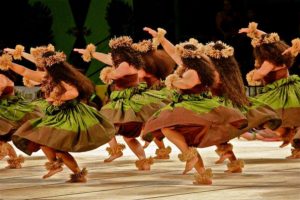 Native Hawaiians are the Aboriginal Polynesian people of the Hawaiian Islands or their descendants. Native Hawaiians trace their ancestry back to the original Polynesian settlers of Hawaii. In total, 527,000 Americans consider themselves Native Hawaiian.
Native Hawaiians are the Aboriginal Polynesian people of the Hawaiian Islands or their descendants. Native Hawaiians trace their ancestry back to the original Polynesian settlers of Hawaii. In total, 527,000 Americans consider themselves Native Hawaiian.
The aboriginal culture of Hawaii is Polynesian. While traditional Hawaiian culture remains as vestiges in modern Hawaiian society, there are re-enactments of the ceremonies and traditions throughout the islands. Some of these cultural influences, including the popularity of lu’au and hula, are strong enough to affect the wider United States. It is one of the most recognized and well known Hawaiian art. Hula is not just danced for enjoyment. The truth is, the dances and chants of hula are usually based on traditions, myths, tales, history, religious rites, and the general philosophy of the Hawaiians. These poetic celebrations of life and culture convey stories about who the Hawaiians are and what the Hawaiians are all about. The people of Hawaii are still passionate about preserving their culture and their traditions, which makes them one of the most enduring and persevering culture in the world. Perhaps it is because of their close ties with and respect for nature that the Hawaiians hold on so tightly to their ways.